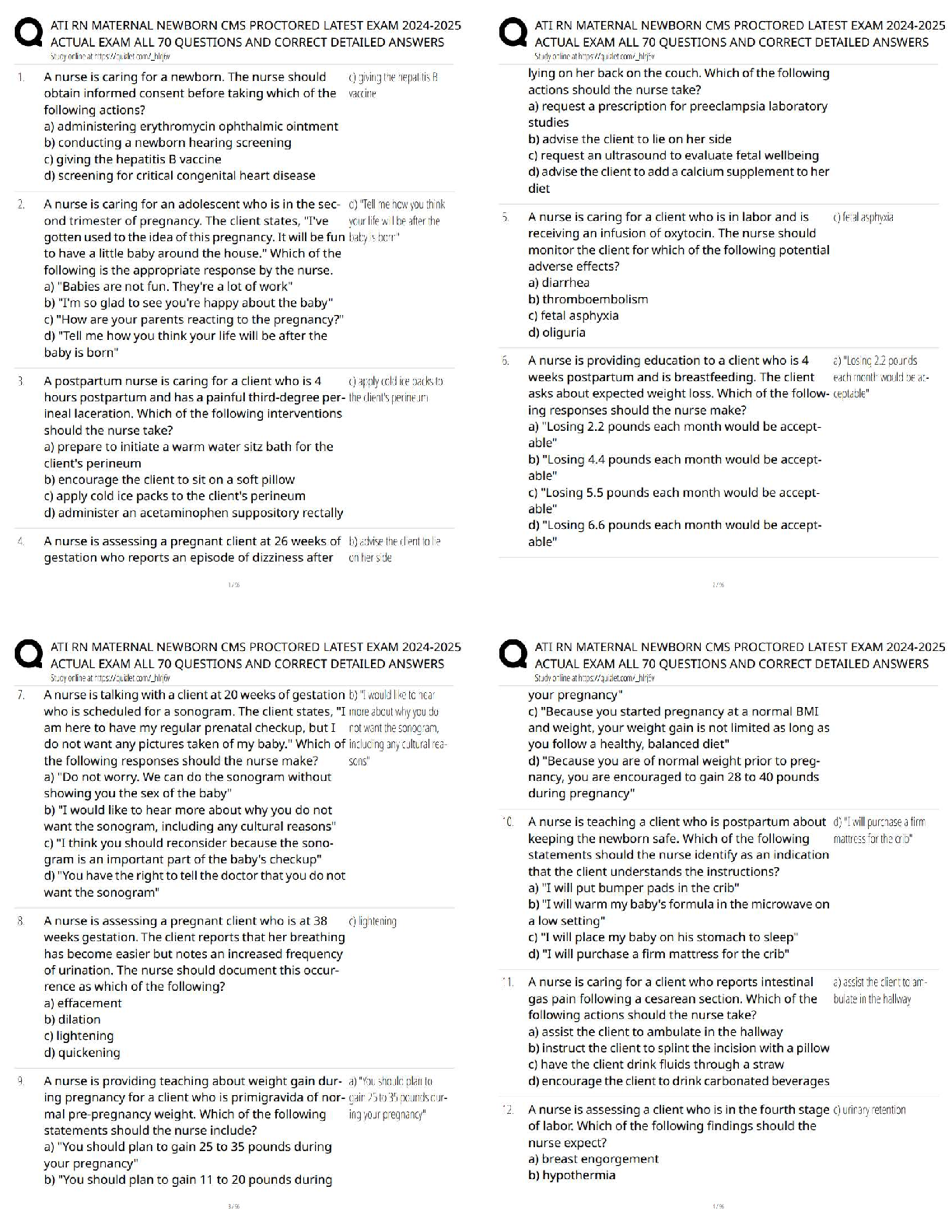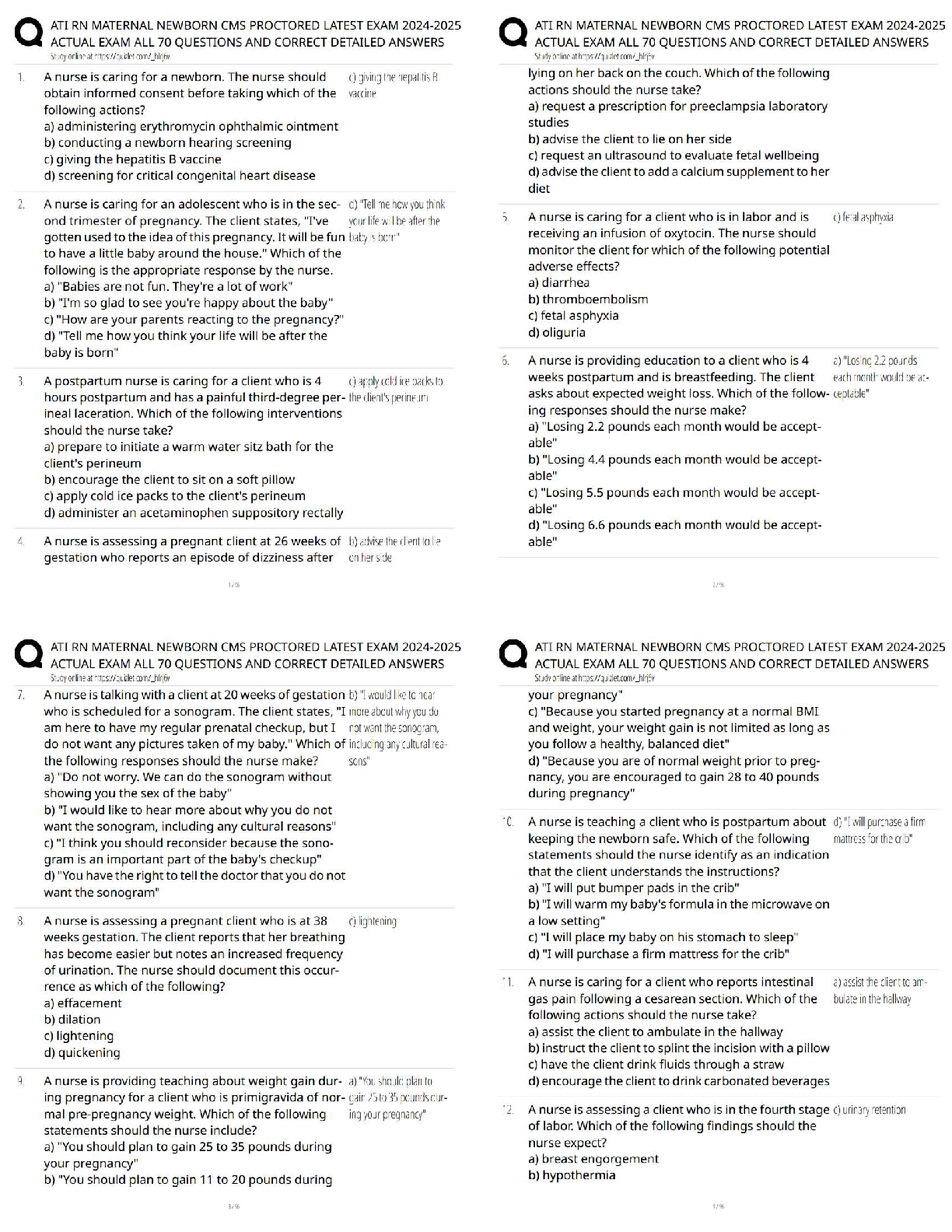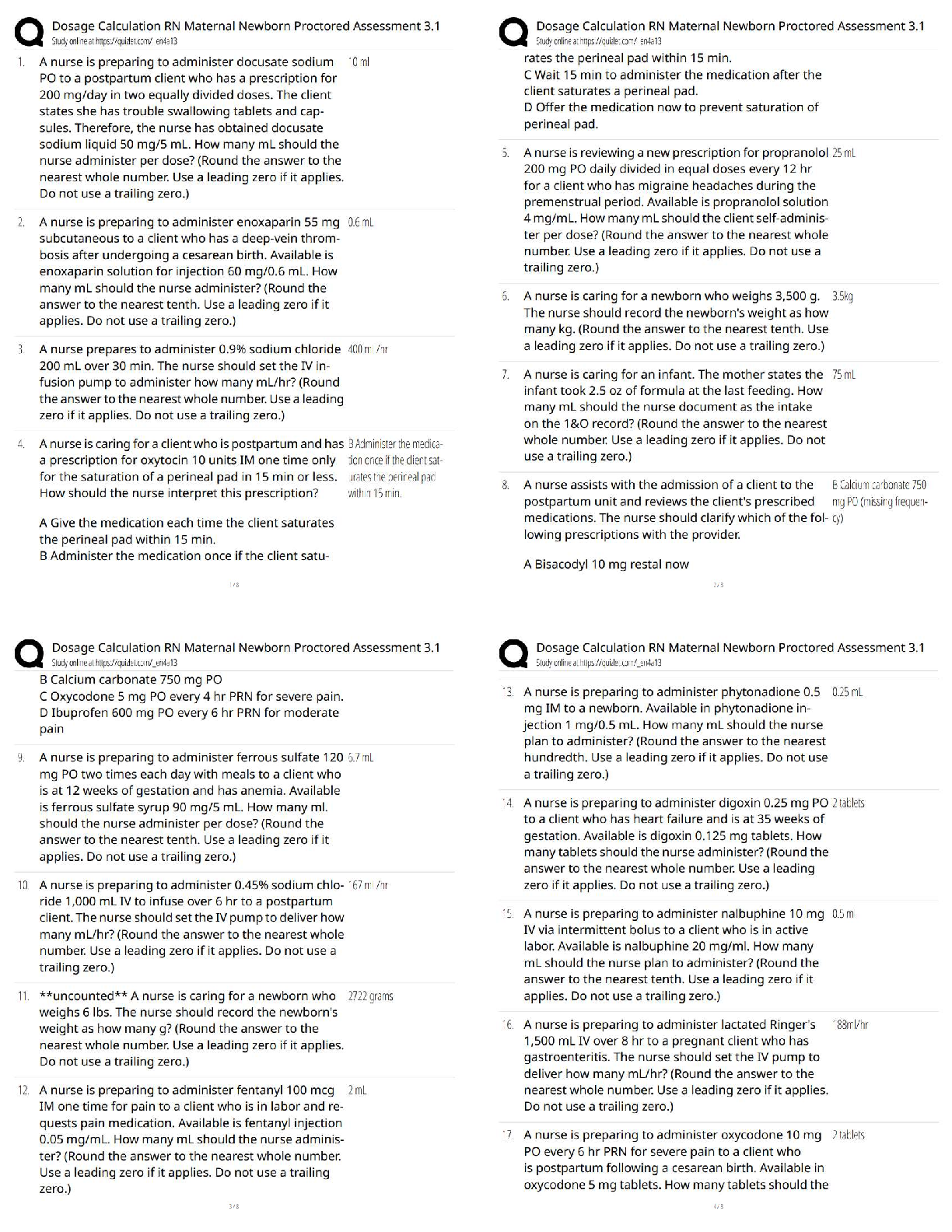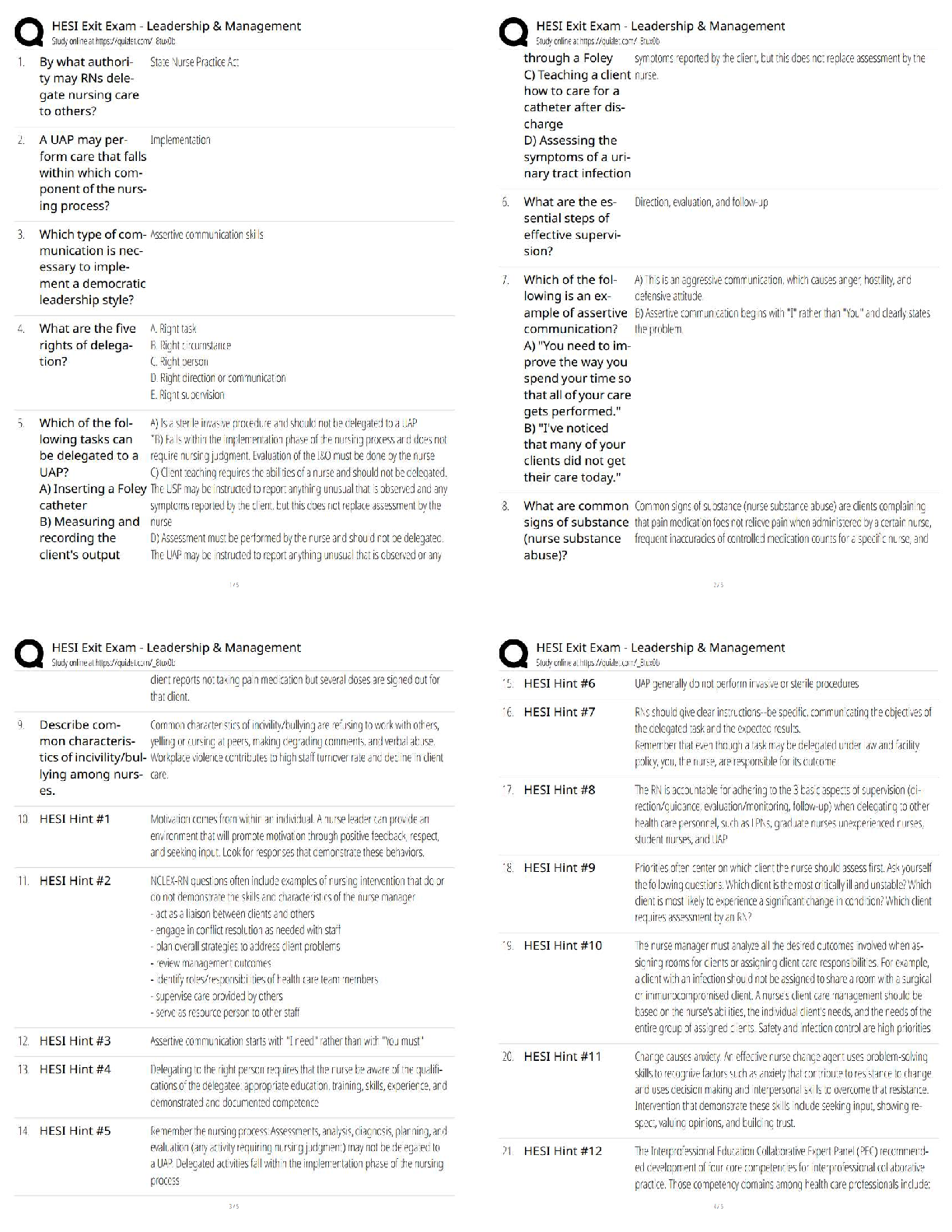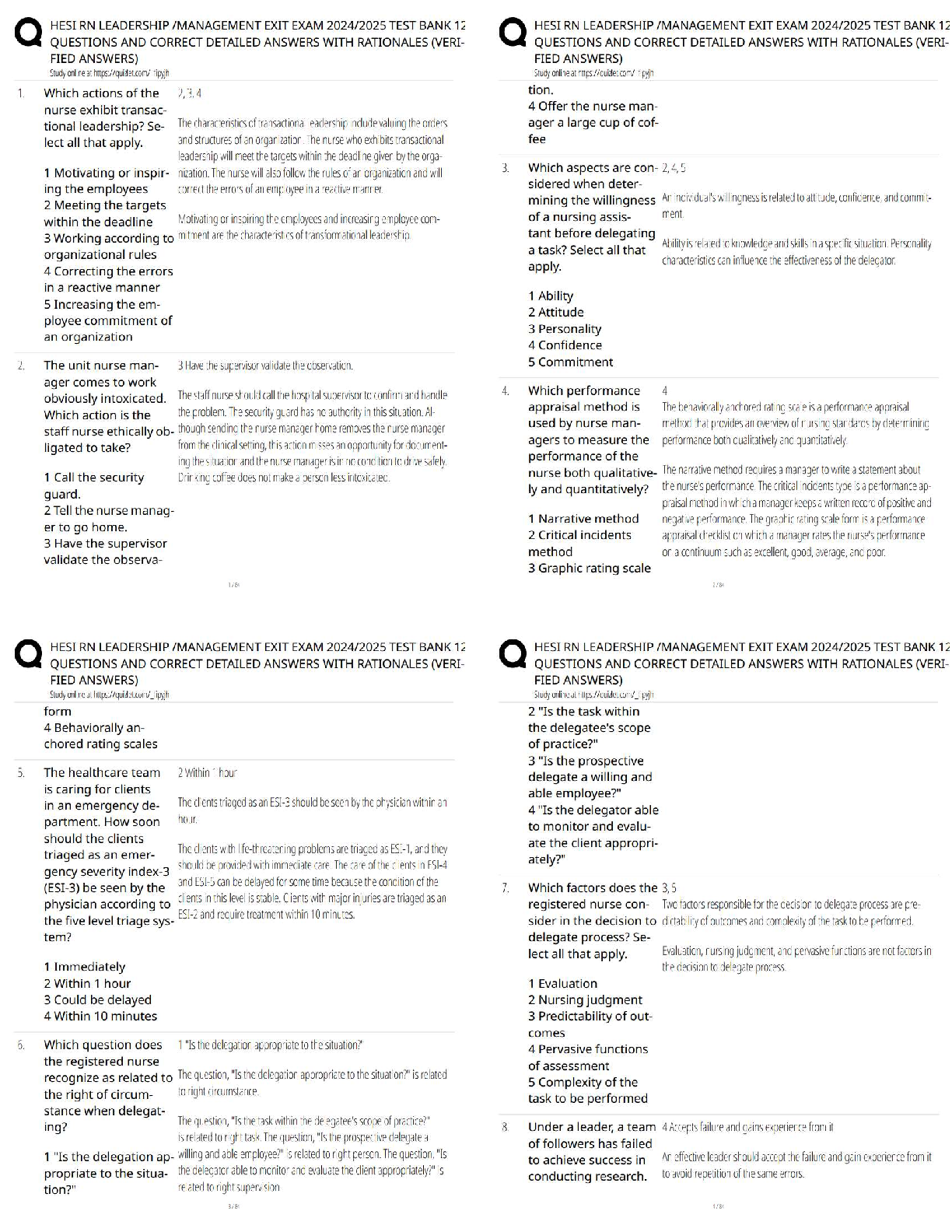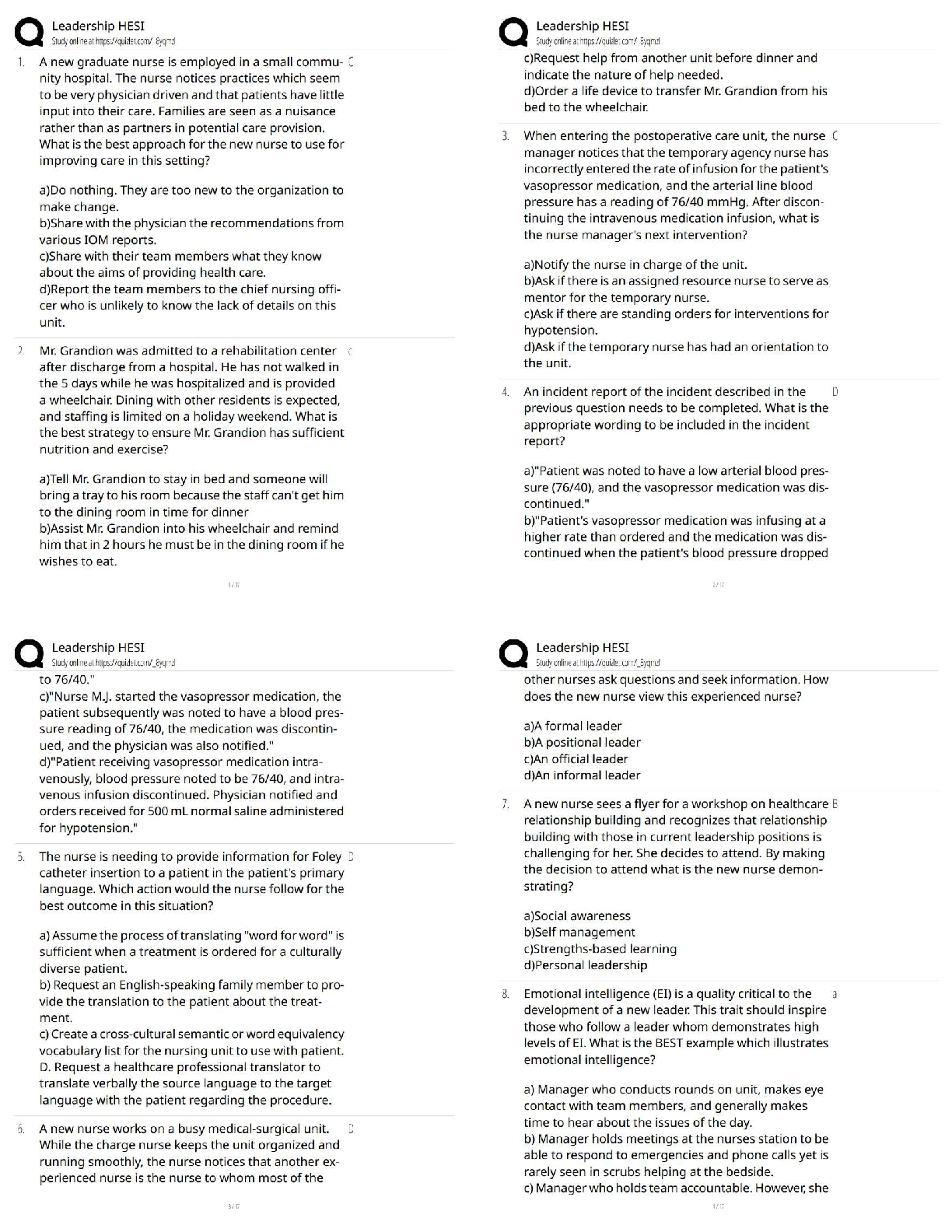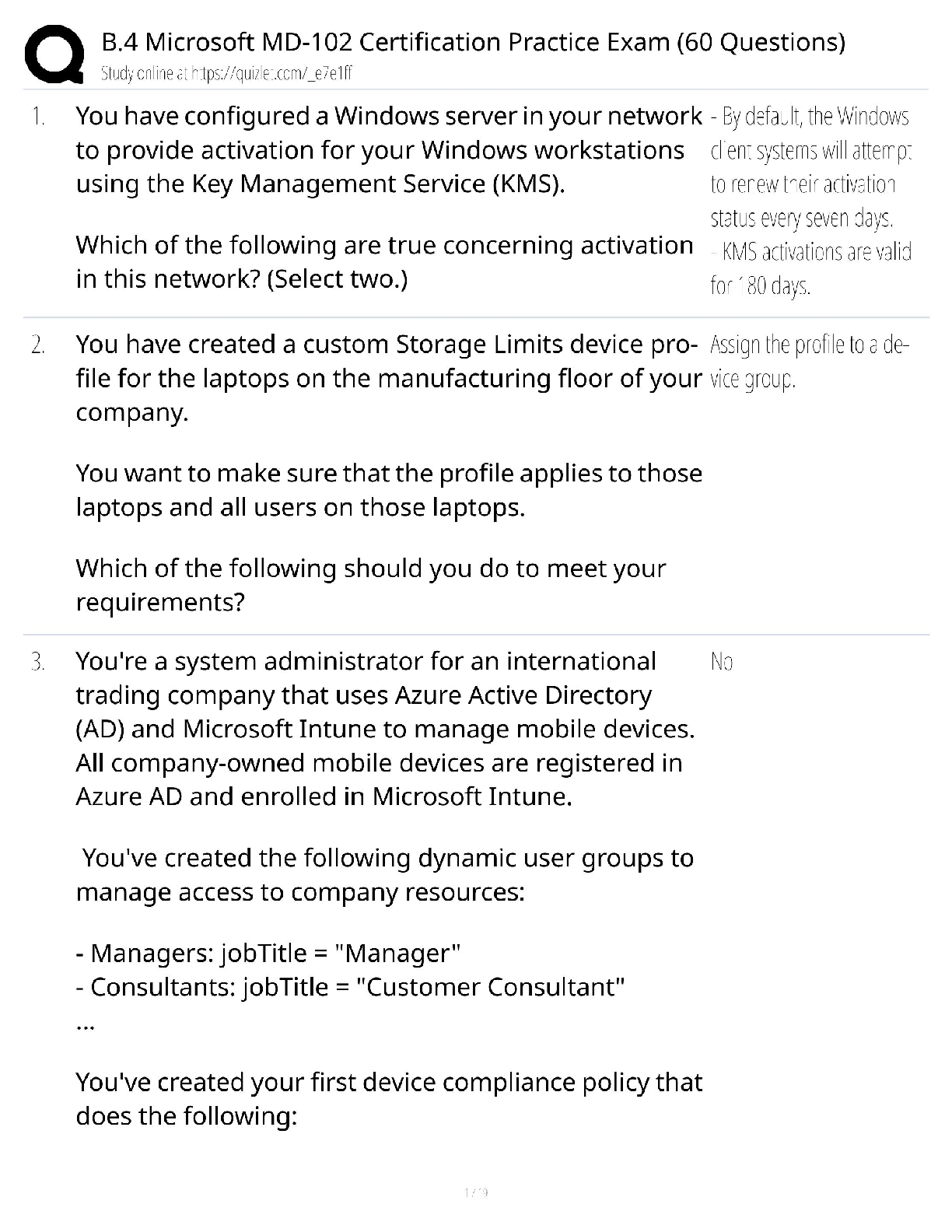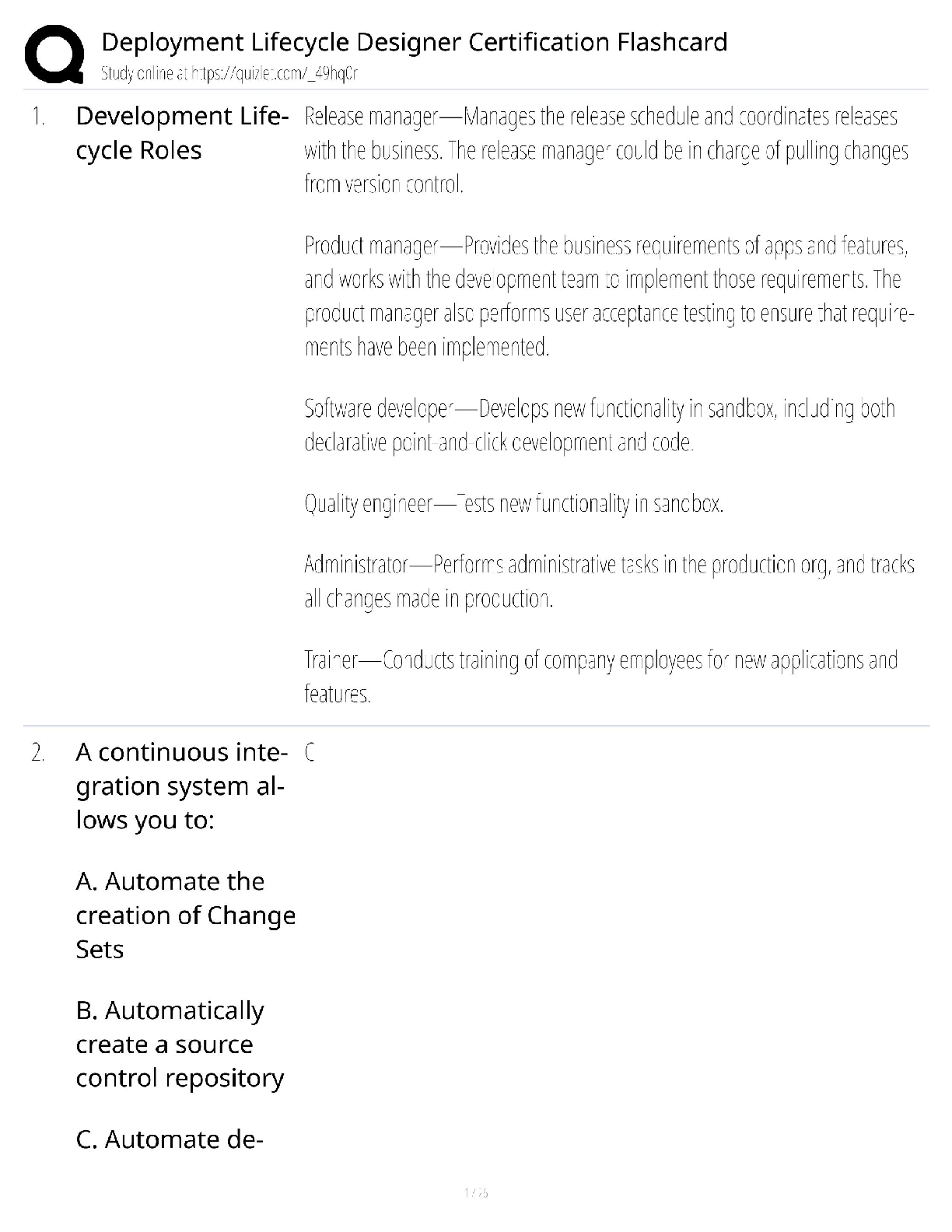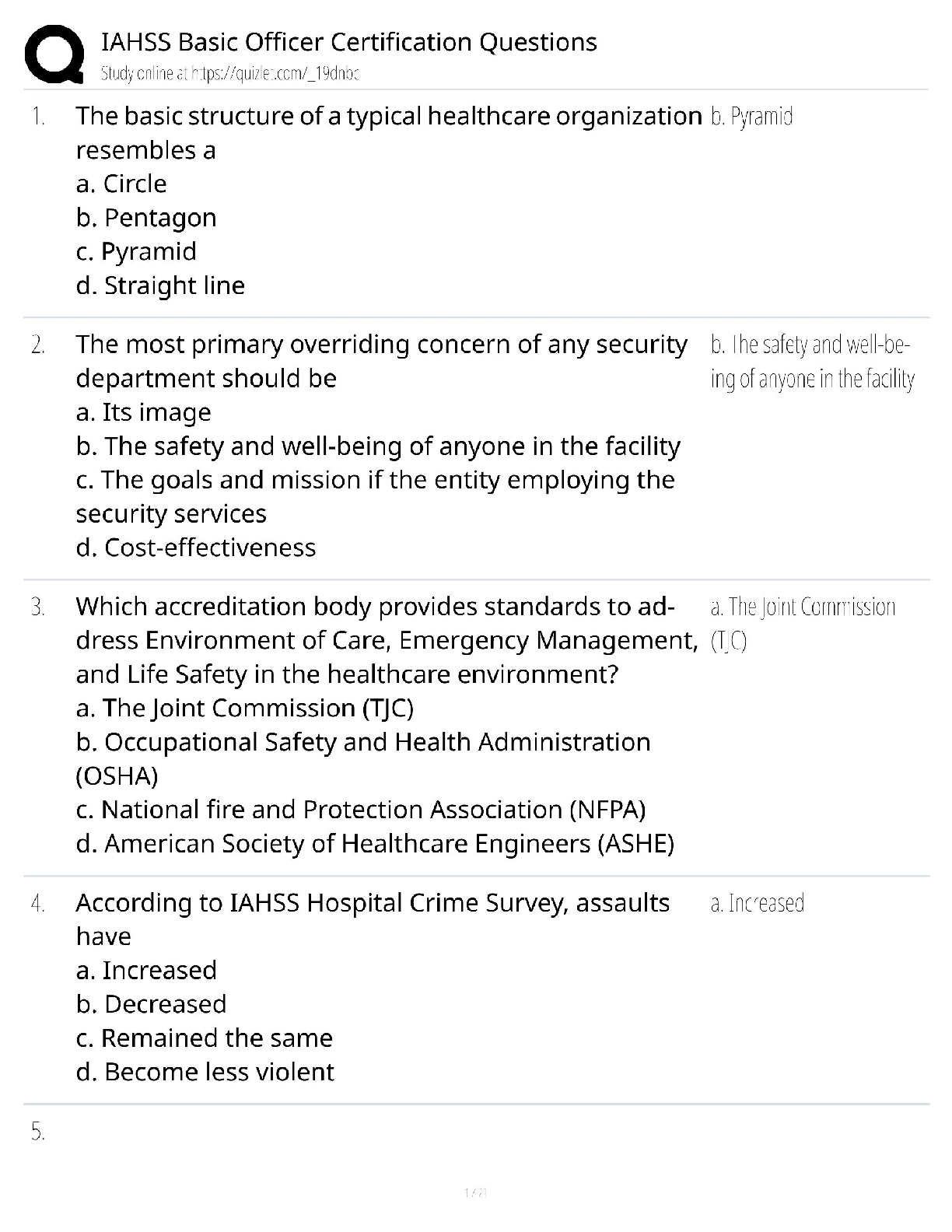Financial Accounting > QUESTIONS & ANSWERS > ACC 557 Quantitative Methods Week 1 Q&A | Strayer University, Washington (All)
ACC 557 Quantitative Methods Week 1 Q&A | Strayer University, Washington
Document Content and Description Below
ACC 557 Quantitative Methods Week 1 Q&A | Strayer University, Washington Week 1 1. If you had to select one criteria for choosing amongst projects, which would you select? Net Present value Int ... ernal Rate of Return Either Payback or internal Rate of Return Payback Return on Investment 2. You may use a spreadsheet like Excel to help you find the solution to this question. How much money would you have to put in the bank today, assuming that the bank account paid interest at the rate of 5% per year, in order to be able to withdraw $10,000 at the end of Year 1, $20,000 at the end of Year 2 and $30,000 at the end of Year 3, and have nothing left in the account after the last withdrawal (round to the nearest dollar)? $60,000 $53,580 $70,125 $45,560 None of these are true 3. Suppose the bank paid you interest at the rate of 15% per year. What amount of money would you have to put in the bank today, in order to be able to withdraw $10,000 at the end of Year 1, $20,000 at the end of Year 2 and $30,000 at the end of Year 3, and have nothing left in the account after the last withdrawal (round to the nearest dollar)? $60,000 $71,125 None of these are true $32,154 $43,544 4. Suppose that you wanted to be able to withdraw $10,000 at the end of Year 3 from a bank account that will pay you 5% interest in the first year, 7% interest in the second year, and 10% interest in the third year. What amount of money would you have to put in the bank today to be able to make that withdrawal at the end of Year 3 and have nothing left in the account after that withdrawal (round to the nearest dollar)? $6,920 None of these are true $7,513 $4,420 $8,092 5. Suppose your firm is considering investing in a project that requires an initial investment of $200,000 at Year 0, and returns cash flows at the end of Years 1 to 3 of $50,000, $100,000 and $150,000 respectively. Further, assume your company’s cost of capital is 15%. What is the net present value of the project (round to the nearest dollar)? $100,000 $17,720 -$25,123 $12,970 None of these are true 6. Suppose your firm is considering investing in a project that requires an initial investment of $200,000 at Year 0, and returns cash flows at the end of Years 1 to 3 of $50,000, $100,000 and $150,000 respectively. Further, assume your company’s cost of capital is 15%. What is the internal rate of return of the project (round your IRR to the nearest tenth of a percent, e.g., 10.1%)? 19.4% None of these are true 22.6% 24.1% 15.0% 7. Suppose your firm is considering investing in a project that requires an initial investment of $200,000 at Year 0, and returns cash flows at the end of Years 1 to 3 of $50,000, $100,000 and $150,000 respectively. Further, assume your company’s cost of capital is 15%. In what year does payback occur for the project? Year 1 Payback is never reached Year 2 Year 0 Year3 8. Suppose your firm is considering investing in a project that requires an initial investment of $500,000 at Year 0, and returns cash flows at the end of Years 1 to 5 of $20,000, $40,000, $60,000, $80,000 and $350,000 respectively. Further, assume your company’s cost of capital is 8%. What is the net present value of the project (round to the nearest dollar)? $0 -$25,552 None of these are true $90,000 -$102,551 9. Suppose your firm is considering investing in a project that requires an initial investment of $500,000 at Year 0, and returns cash flows at the end of Years 1 to 5 of $20,000, $40,000, $60,000, $80,000 and $350,000, respectively. Further, assume your company’s cost of capital is 8%. What is the internal rate of return of the project (round your IRR to the nearest tenth of a percent, e.g., 10.1%)? 7.9% 0.0% 9.4% 2.3% None of these are true 10. This question relates to a comparison of the projects described in questions 5 and 8. Refer to the projects in questions 5 and 8. Which of the following best describes the actions you would take based on your analysis? Reject both projects Reject the project in Q5 and accept the project in Q8 Accept the project in Q5 and reject the project in Q8 Accept both projects [Show More]
Last updated: 6 months ago
Preview 1 out of 3 pages

Loading document previews ...
Buy this document to get the full access instantly
Instant Download Access after purchase
Buy NowInstant download
We Accept:

Reviews( 0 )
$7.00
Can't find what you want? Try our AI powered Search
Document information
Connected school, study & course
About the document
Uploaded On
Sep 29, 2022
Number of pages
3
Written in
All
Additional information
This document has been written for:
Uploaded
Sep 29, 2022
Downloads
0
Views
219






.png)
.png)
.png)
.png)
.png)
.png)
.png)

